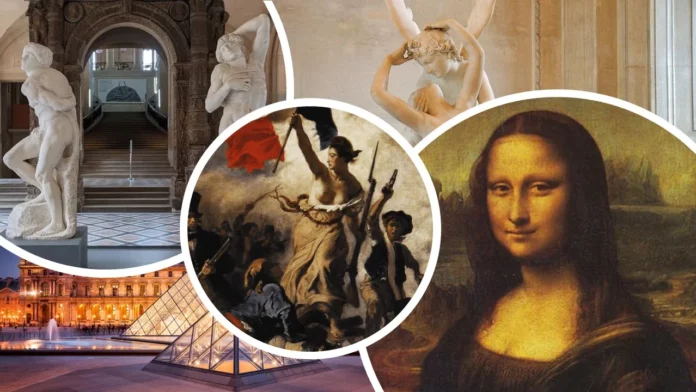The Louvre Museum in Paris, France, is the world’s largest and one of the most well-known art museums. With a collection spanning over 35,000 artworks and 500,000 objects, the museum is a cultural epicenter visited by millions annually. Built as a fortress in the 12th century and later transformed into a royal palace, the Louvre is not just a display of art; it’s a testament to history and culture. Among its vast collection, there are some highlights that every visitor should experience. Here are the top 10 must-see treasures within the Louvre’s majestic walls.
1. Mona Lisa
The Mona Lisa remains the most famous painting in art history, drawing millions of visitors each year. Painted by Leonardo da Vinci between 1503 and 1506, this portrait of a woman with an enigmatic smile captivates audiences with its masterful use of light, shadow, and depth. Protected behind bulletproof glass, the painting is surprisingly small, measuring only 77 cm by 53 cm. The Mona Lisa gained even more fame after being stolen in 1911 and recovered two years later, solidifying its place as an icon of art.

2. Psyche Revived by Cupid’s Kiss
Antonio Canova’s Psyche Revived by Cupid’s Kiss is a stunning marble sculpture from the Neoclassical period, created between 1787 and 1793. The sculpture captures the moment from Greek mythology when Cupid revives Psyche with a kiss, symbolizing love and passion. Standing at 155 cm tall, the statue is renowned for its intricate details and the tender emotions it conveys, showcasing Canova’s ability to bring mythological scenes to life with realism and grace.
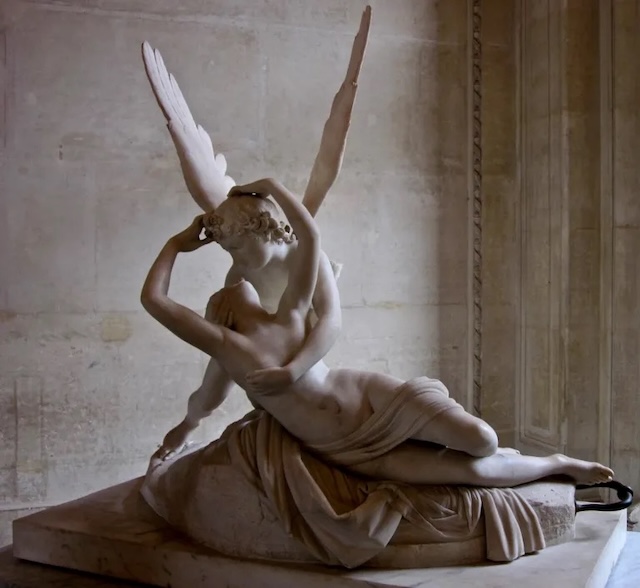
3. Venus de Milo
Discovered on the island of Milos in 1820, the Venus de Milo is an ancient Greek statue of the goddess Aphrodite, dating from around 130 to 100 BCE. Despite its missing arms, the sculpture’s flawless proportions and elegant form have made it one of the best-known works of ancient Greek art. The 203 cm tall statue represents the ideals of beauty and harmony, illustrating the classical artistry of its time. A visit to the Louvre isn’t complete without admiring this timeless masterpiece.
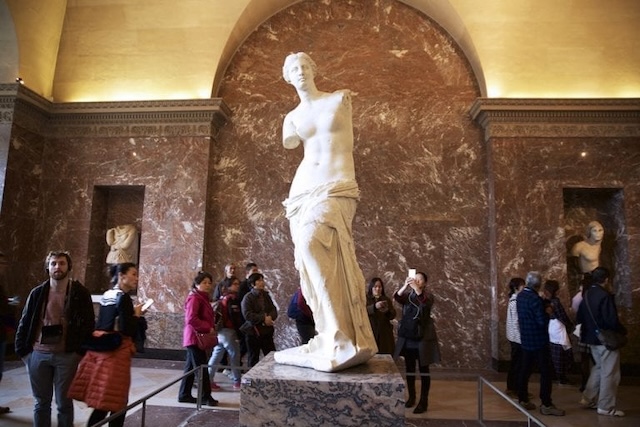
4. Liberty Leading the People
Eugène Delacroix’s painting Liberty Leading the People is a powerful depiction of the July Revolution of 1830 in France. Created in the same year, the large canvas (260 cm by 325 cm) portrays Liberty as a woman carrying the French tricolor flag, leading a diverse group of revolutionaries. The dynamic composition and dramatic use of color capture the spirit of freedom and revolution, making it a symbol of French nationalism and a highlight of the museum’s collection.

5. Winged Victory of Samothrace
Dating back to around 200-190 BCE, the Winged Victory of Samothrace is a striking example of Hellenistic sculpture. Discovered on the island of Samothrace in 1863, this 244 cm tall statue depicts the goddess Nike standing on the prow of a ship. The statue is renowned for its sense of movement, with its intricate drapery suggesting motion in the wind. It perfectly combines grace and power, making it one of the most admired sculptures in the Louvre.
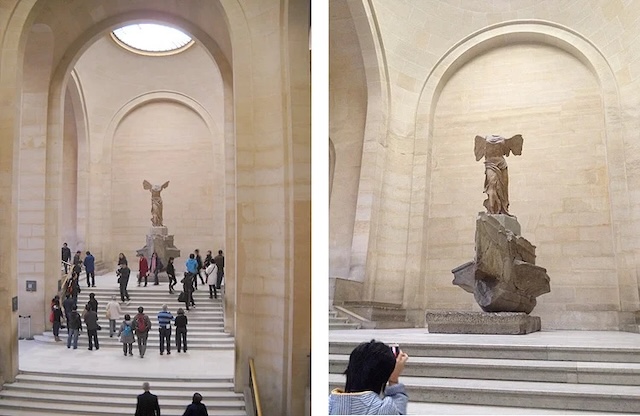
6. Slave Statues
Michelangelo’s Slave Statues, known as the Rebellious Slave and the Dying Slave, were sculpted between 1513 and 1516 for the tomb of Pope Julius II. Though unfinished, these statues, standing over 2 meters tall, embody the struggle and suffering of humanity. They depict the human soul’s fight to break free from physical limitations. These masterpieces highlight Michelangelo’s skill in portraying the human form with raw emotion and power.

7. Great Sphinx of Tanis
The Great Sphinx of Tanis is an impressive ancient Egyptian statue dating back to around 2600 BCE. Discovered in the ruins of the Temple of Amun in Tanis, this statue measures over 4 meters in length. The Sphinx, with a lion’s body and a human face, symbolizes the strength and intelligence of the Pharaoh. The statue provides insight into the grandeur of ancient Egyptian civilization and serves as an iconic representation of its cultural achievements.
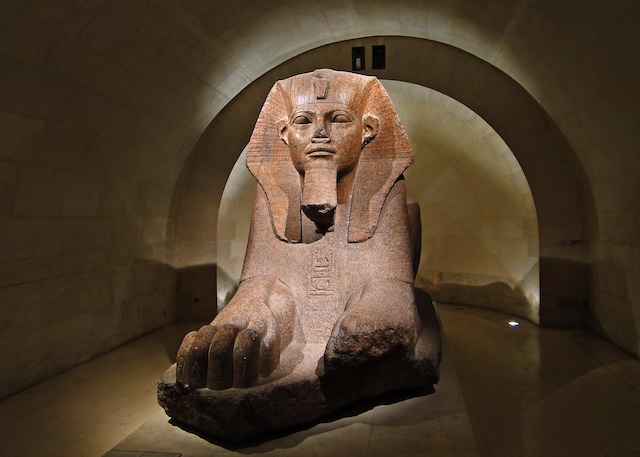
8. The Raft of the Medusa
Completed in 1819, Théodore Géricault’s The Raft of the Medusa is a large-scale painting measuring 491 cm by 716 cm. It depicts the harrowing aftermath of the shipwreck of the French frigate Méduse. The survivors, clinging to a makeshift raft, are portrayed with intense realism and dramatic lighting. The painting is a masterful portrayal of human suffering, resilience, and despair, marking a significant work in the French Romantic movement.
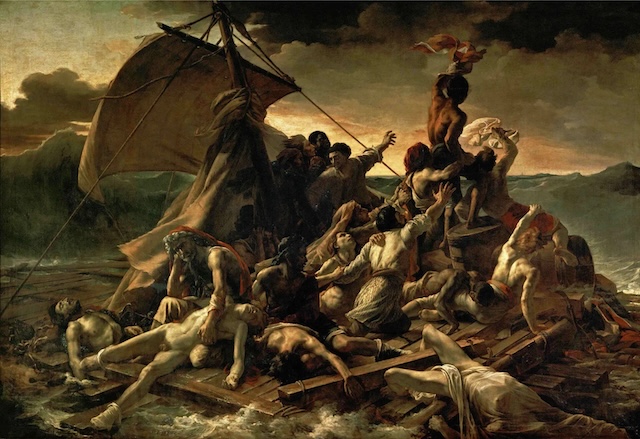
9. The Coronation of Napoléon
Jacques-Louis David’s The Coronation of Napoléon, completed in 1807, is an enormous painting measuring 621 cm by 979 cm. It depicts the moment when Napoléon crowned himself Emperor at Notre Dame Cathedral in 1804. The painting includes over 150 portraits of those present at the ceremony, meticulously capturing every detail of the grand event. This masterpiece not only showcases David’s talent but also serves as a historical document, depicting a pivotal moment in French history.
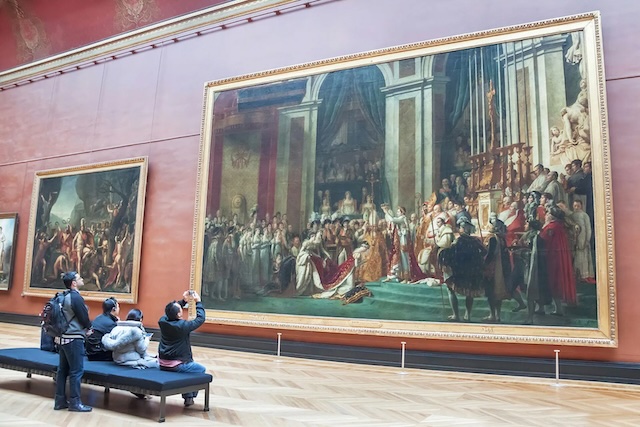
10. The Lacemaker
Johannes Vermeer’s The Lacemaker, painted between 1669 and 1670, is a small but intricate portrayal of a young girl focused on her lacework. Measuring only 24.5 cm by 21 cm, the painting captivates viewers with its delicate brushwork and serene atmosphere. Vermeer’s use of light and texture creates a sense of intimacy, highlighting the beauty in quiet concentration. This masterpiece of Dutch Baroque art remains a testament to Vermeer’s genius in capturing everyday moments.

Conclusion
The Louvre Museum is a treasure trove of human creativity, housing some of the most famous and influential artworks in history. From the enigmatic smile of the Mona Lisa to the heroic stance of Liberty Leading the People, each piece tells a story that transcends time. These ten masterpieces offer just a glimpse into the rich cultural heritage preserved within the museum’s walls, making the Louvre a must-visit for art lovers and casual tourists alike. With every visit, the Louvre continues to connect us to the past while inspiring future generations.
